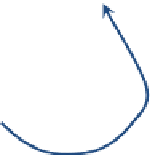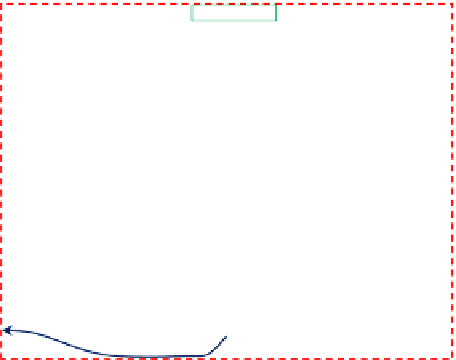Biomedical Engineering Reference
In-Depth Information
Glucose
3PG
2PG
PEP
Pyruvate
DHAP
ATP
G6P
F6P
FBP
Malate
OAA
Formic
NADPH
AcCoA
6PGA
G3P
DPG
H
+
E4P
Fumarate
Citrate
FADH
2
6PG
TCA
S7P
X5P
NADH
Succinate
Isocitrate
Ac
FAD
Ru5P
α
-Ketoglutarate
R5P
SuccCoA
FIGURE 10.34
Interrelationship of major metabolic pathways in E. coli. The connecting path thickness repre-
sents the strength of the flux through it.
Figure 10.34
shows the interrelationship of major metabolic pathways in E. coli. The direc-
tion of the arrow indicates the direction of material flow (from the substrate glucose). Glucose
enters the cell via glycolysis: EMP and PP and connects to TCA. The width of arrows indi-
cates the strength of the fluxes. There is no net loss of strength of fluxes at each node (mole-
cule) along the metabolic pathways. As shown in Example 10-3, the fluxes from one molecule
to another along the metabolic pathways are nonlinear functions of the concentrations.
However, due to the relative magnitude of the saturation constants as compared to the
Cytoplasm
OAA
Mitochodrion
Fatty acids
Citrate
Gln
Mal-CoA
NH
3
Ac-CoA
Glucose
Glu
ATP
LAC
H
2
O
DHAP
NAD
+
KA
Iso-
citrate
Pyr
NAD
+
ALA
ADP
NADH
Aconitate
H
2
O
AA
Ala
CO
2
G6P
FBP
NADH
KA
α
-ketoglutarate
ADP
NADP
CoA
NAD
+
NADH
NAD
+
AA
H
Citrate
CoA
ATP
CO
2
Pyruvate
G3P
PEP
NADH
NADPH
CO
2
Acetyl CoA
F6P
Succinyl CoA
NADPH
QDP
H
2
O
GLCNT-6-P
NADP
HCO
-
GTP
GDP
CoA
NADP
QTP
CO
2
CO
2
OAA
NADH
NAD
+
Succinate
ATP
NADPH
X5P
NADH
NAD
+
FAD
FADH
2
ADP
Malate
OAA
R5P
H
2
O
FIGURE 10.35
The major metabolic pathways in mammalian cells. The cytosolic and mitochondrial reactions
are shown together with the compounds which can cross from the mitochondria to the cytosol.




































































































Search WWH ::

Custom Search